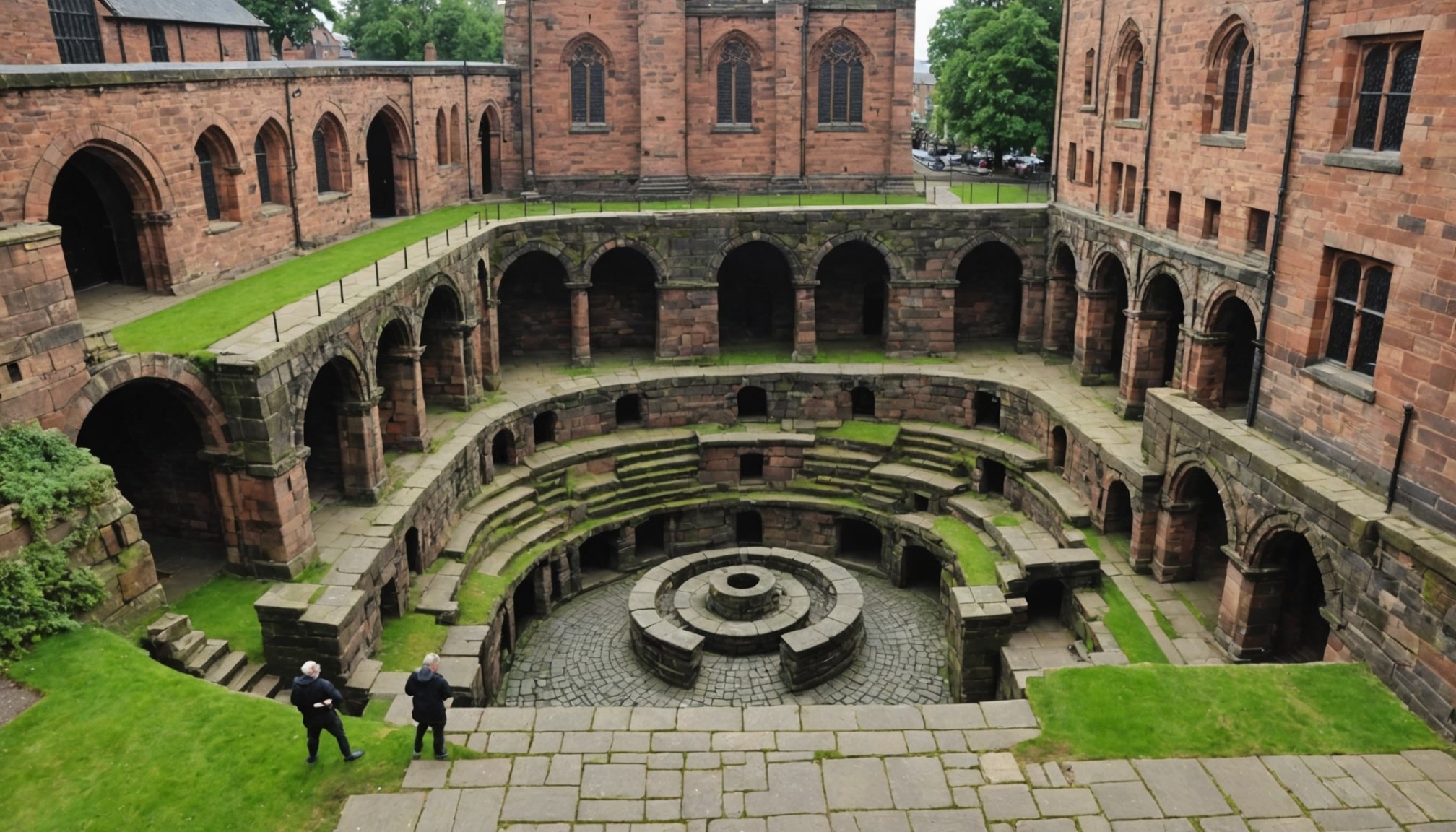Overview of Chester’s Roman Heritage
Chester boasts a rich Roman history as one of the most important settlements in Roman Britain. Originally known as “Deva Victrix,” it served as a strategic military base and a hub for governance and administration. The Roman occupation profoundly influenced the region, leaving a lasting imprint on local culture and development. Significant Roman architectural remains, such as the city walls, amphitheatre, and the fortresses, underscore the city’s historical significance.
One of the most remarkable archaeological findings is the Chester Roman Amphitheatre, the largest of its kind in Britain. This structure highlights the city’s role as a vibrant centre for entertainment and social gatherings. Excavations have also unearthed notable artefacts, including pottery, coins, and weaponry, providing insight into the daily lives of its Roman inhabitants.
Also to read : Discover the Best Photogenic Walking Trails in the Stunning Yorkshire Moors
The impact of the Roman occupation extended to agriculture, trade routes, and urban planning, shaping the evolving framework of Chester. This blend of military prowess and civil engineering demonstrated the strategic significance and adaptability of Roman practices in Chester. Today, the remnants of Roman influence continue to draw historians and tourists alike, eager to connect with the city’s remarkable past.
Significant Archaeological Sites
Chester is home to some remarkable Roman archaeological sites, which offer fascinating insights into its ancient past. Among these, the Roman Amphitheatre stands out as the largest in Britain. It once seated up to 7,000 spectators who gathered to watch gladiatorial combats and military drills. Today, its partial remains evoke the grand scale and architectural prowess of ancient Roman structures.
Also read : Uncovering Liverpool”s Titanic Connection: Historic Sites Linked to the Ill-Fated Ship
Not far from the amphitheatre lies the Roman Wall, an iconic feature of Chester’s landscape. These walls, among the most complete in Britain, stretch over two miles and provide visitors with a real sense of the city’s historical breadth. As you walk along the walls, you can imagine the days when Roman soldiers patrolled these fortifications.
Artifacts discovered at these sites, including pottery, weapons, and personal items, further illuminate Chester’s Roman heritage. These treasures, displayed in local museums, provide valuable context for the daily lives of its ancient inhabitants. Exploring these Chester attractions is not just a journey through time; it’s an opportunity to understand the city’s rich historical tapestry, rooted deeply in its Roman origins.
Historical Landmarks and Monuments
Chester’s Roman landmarks are a testament to its rich cultural heritage, offering a glimpse into a bygone era. Prominent among these is the Chester Roman Gardens, where visitors can explore artefacts and remnants of Roman engineering. The gardens exhibit a bridge built using traditional methods, showcasing the precision and strength of ancient Roman design. Additionally, the Grosvenor Museum presents a detailed narrative of the area’s historical significance, appealing to those interested in the intertwining of culture and history.
These historical monuments not only highlight the architectural skills of Roman builders but also demonstrate the strategic importance placed on aesthetic and practical designs. A notable example is the intricate stonework and paving methods employed, which are still admired by contemporary architects.
For an enriching experience, it’s advisable to dedicate ample time to explore these sites. Early morning visits can offer a peaceful atmosphere, allowing for unobstructed views of the monuments and gardens. Opt for guided tours when available; they are valuable for gaining insights that might not be apparent at first glance. Visitors are encouraged to delve into these aspects while visiting Chester to truly appreciate its historic depth.
Guided Tours and Visitor Information
Chester is renowned for its Roman heritage, offering visitors a plethora of guided tours that immerse them in the city’s ancient history. These tours are crucial for anyone keen on truly appreciating the storied past Chester offers. Roman heritage tours are particularly popular, shedding light on the remnants from the Roman era, including the city walls and amphitheatre.
When visiting Chester, it’s beneficial to plan ahead to make the most of these tours. Opting for tours led by knowledgeable guides can enrich your understanding as they provide historical insights and anecdotes that you might otherwise miss. Prior to setting out, it’s advisable to check the schedule and availability of these tours, as they can be quite sought after, especially during peak tourist seasons.
To further enhance your experience, take advantage of the resources available for visitors, such as informative maps and brochures. These can usually be found at tourist information centres, providing valuable guidance and helping you to navigate Chester’s Roman sites efficiently. These materials often include suggested routes and lesser-known facts that bring the ancient city to life.
The Cultural Impact of Roman Occupation
Exploring Chester’s rich history reveals a deep Roman influence woven into its cultural heritage. The Roman occupation significantly shaped Chester’s identity, evident in its governance, infrastructure, and landscape. This historical context reflects how the Romans laid a foundational blueprint for Chester’s development, influencing various aspects of daily life.
Roman Governance and Infrastructure
Roman governance introduced systematic administration, which established order and efficiency. The legacy of this structured governance persists in modern Chester. Their building techniques laid the groundwork for Chester’s architecture. The meticulously planned cities and roads are prime examples of technological advancements from the Roman era, highlighting the sophistication of Roman infrastructure. These roads not only connected regions but facilitated trade and cultural exchange, leaving a lasting imprint on Chester’s landscape.
Significant Events and Repercussions
Key events during Roman rule also played a pivotal role. The establishment of Deva Victrix as a major military base signified Chester’s strategic importance. This fortified city became a hub of activity, leading to economic growth and cultural assimilation. The repercussions of these developments have endured, shaping Chester’s evolution from a thriving Roman settlement to a dynamic modern city.











